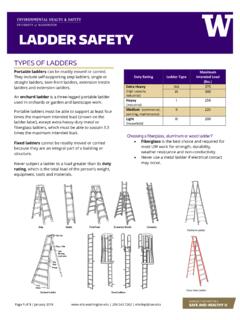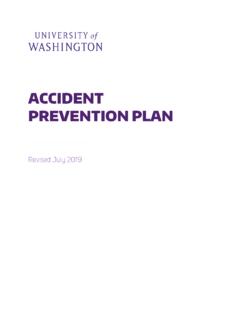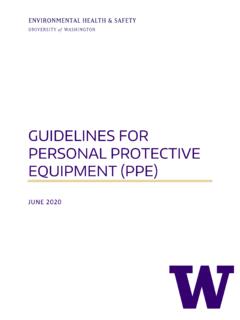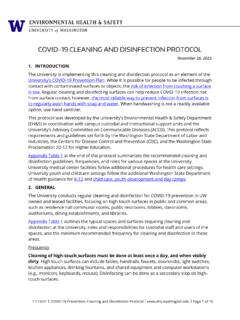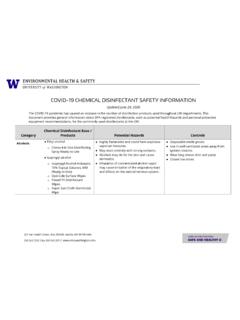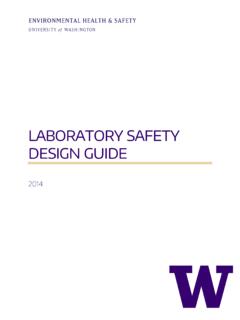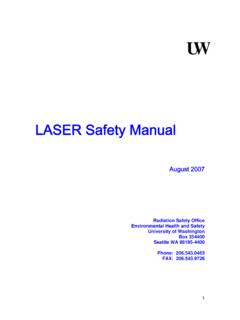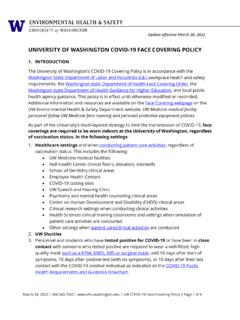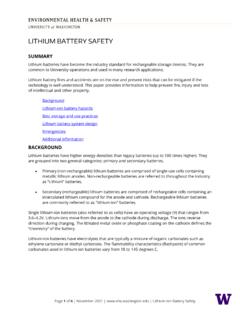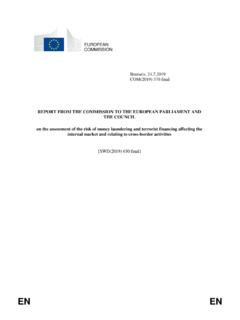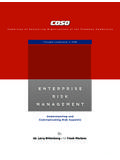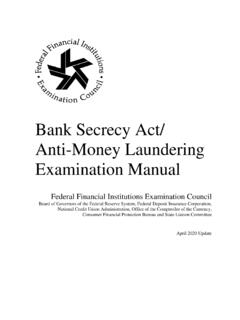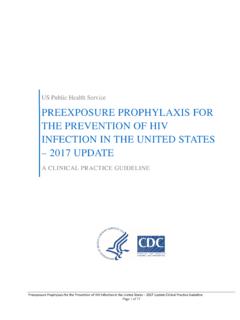Transcription of LABORATORY RISK ASSESSMENT TOOL (Lab R.A.T.) …
1 201 Hall Health Center, Box 354400, Seattle, WA 98195-4400 fax LABORATORY RISK ASSESSMENT TOOL (Lab ) GUIDELINES WHAT IS A RISK ASSESSMENT TOOL? Prevention of workplace injuries and incidents begins with identifying hazards. A risk ASSESSMENT tool is one practical approach recommended to identify hazards and ways to reduce or eliminate hazards. It focuses on the relationship between the researcher, the experiment, the tools, and the work environment. Ideally, after you identify uncontrolled hazards, you will take steps to eliminate or reduce them to an acceptable risk level. WHAT IS A HAZARD? A hazard is the potential for harm. In practical terms, a hazard often is associated with a material, condition, or activity that, if left uncontrolled, can result in an injury, illness, environmental release, property damage, and/or an interruption in work. WHAT IS RISK? A risk is the probability or likelihood that that a hazard will cause harm.
2 In practical terms, risk is the product of the likelihood of a hazard causing harm and the severity of that harm. WHEN DO YOU USE THIS TOOL? Use a risk ASSESSMENT when you are developing a new experiment, procedure, or project in the LABORATORY . In Phase 1 of your ASSESSMENT you will identify the question you are trying to answer, the approach you want to use, and the general hazards associated with the materials, chemicals, equipment, and processes you intend to use. A risk ASSESSMENT focuses on hazard identification at each step or task level of the experiment. When conducting an ASSESSMENT , always consider the full range of safety, health, and environmental hazards, from machine safety to high noise levels to chemical and biological exposures. For Phase 2 of your ASSESSMENT : Outline each step/task of your experiment or project; Talk with your PI and peers about routine and infrequent tasks, near misses, and safety concerns; Learn more about the hazards of all materials and chemicals involved in the experiment/project.
3 A risk ASSESSMENT tool can provide essential information for enhancing safety practices, establishing proper procedures, and ensuring all lab members are properly trained. You fax Page 2 of 4 may need to get assistance from experts about certain hazards involved. Consult EH&S if you have questions. HOW DO YOU IDENTIFY HAZARDS IN THE LAB? Your goal is to discover the following information before starting your experiment or project: What are the inherent hazards of the materials, equipment, and activity? What can go wrong? How could it happen? What are the worst-case credible consequences? What are the contributing factors? Documenting the answers to these questions in your risk ASSESSMENT tool form in a consistent manner will help to ensure that efforts to eliminate hazards and implement controls will target the most important contributors to risk. Rarely is a hazard a simple case of one singular cause resulting in one singular effect.
4 Good descriptions of hazards include: Where it would happen (environment) Who or what it would happen to (exposure) What precipitates it (trigger) The outcome that would occur (consequence) Any other contributing factors HOW DO YOU REDUCE OR ELIMINATE HAZARDS? After reviewing your list of hazards, use the Hierarchy of Controls to consider what methods will eliminate or reduce them. Think about the controls that need to be in place to address the severity of the worst-case credible consequence. The higher the severity, the higher level or number of controls needed to reduce the risk to an acceptable level. Document the existing controls and ask yourself, How likely is it that the accident scenario will occur with these controls in place? For Phase 3 of the ASSESSMENT , you should review your choices and question the methods you intend to use. Discuss your decisions with your PI, supervisor, and any peers who perform the experiments or tasks being considered.
5 Review incident data or information from co-workers on the likelihood that the accident scenario would occur with controls in place. It may be that additional controls are required based on experience. fax Page 3 of 4 If you plan to introduce new or modified procedures, be sure everyone understands what is involved, what new risks are introduced, and the reasons for the changes. WHAT DO YOU NEED TO KNOW BEFORE STARTING YOUR RISK ASSESSMENT ? When conducting a risk ASSESSMENT , be sure to consult the LABORATORY Safety Manual for standards in research practices. Compliance with these standards is mandatory, and by incorporating these standards in your risk ASSESSMENT , you can be sure that you are meeting UW policies and state regulations. HOW DO YOU ASSIGN RISK? First ask, If a person is exposed to this hazard or accident scenario, how bad would the outcome or consequence be? Consider the worst-case credible consequence without regard to having controls in place.
6 The purpose of this exercise is not to imagine the worst outcome, but to evaluate the most probable level of severity. It is based on your judgment, experience and knowledge of the subject matter. Consult with your PI, supervisors and peers for input. Assign the severity level defined on the Risk Matrix. The next question, How likely is this? refers to the likelihood of a malfunction or accident occurring with the existing controls in place. It is impossible to try to predict when and under what circumstances a system will fail. In this step, you should assume that the system will fail and assume that the researcher is exposed to the hazardous motion or process. Your question is not, When will the equipment or process fail unexpectedly? Your question is, When the equipment or process fails unexpectedly or there is a potential exposure during a hazardous process, how likely is it that the researcher will be injured given the controls currently in place?
7 Review accident data or lessons learned from both inside and outside of the University to help determine the likelihood the hazard will result in the severity of the harm defined. The answers to these questions and the risk rating matrix will help you determine the risk rating level for your experiment or project. The risk rating is subjective and based on the knowledge and experience that you and your co-workers have. The primary goal is for researchers to analyze and evaluate risks , mitigate them effectively, and differentiate unacceptable and high-level risk steps from those with a lower level risk. This will help drive additional consultation and control measures where needed. You and the PI should decide if the risk level is acceptable before proceeding with a test run. If the risk level is not acceptable, then return to Phase 2 of the risk ASSESSMENT tool and use the hierarchy of controls to design a safer process. HOW DO YOU TEST YOUR PROCESS?
8 Think of how you can test your experimental design by doing a dry run, doing a run with less hazardous materials, or testing the design on a smaller scale. It is particularly important to review your ASSESSMENT if an accident or incident occurs. Based on the fax Page 4 of 4 circumstances, you may determine that you need to change the procedure to prevent similar incidents or near misses in the future. Record notes from any trial runs and evaluations of the experiment or procedure in Phase 4 of the risk ASSESSMENT tool. WHEN IS YOUR RISK ASSESSMENT COMPLETE? When it is time to run your experiment or new procedure, be sure to use the appropriate controls you ve identified. Evaluate and critique all the controls and hazards as you work. If changes are needed, update your risk ASSESSMENT tool and re-evaluate the process. Do this whenever there are changes in scale, reagent, equipment, or conditions that affect the hazard/risk level.
9 Share the new version of your ASSESSMENT with your PI and peers for the next iteration of the experiment. Periodically reviewing your risk ASSESSMENT ensures that it remains current and continues to help reduce accidents and injuries. Even if the experiment or procedure has not changed, it is possible that you will identify hazards during runs that were not identified initially. These findings should be documented and managed. HOW CAN YOU START DOING YOUR RISK ASSESSMENT ? Start your risk ASSESSMENT by downloading the LABORATORY Risk ASSESSMENT Tool (Lab ) here.
